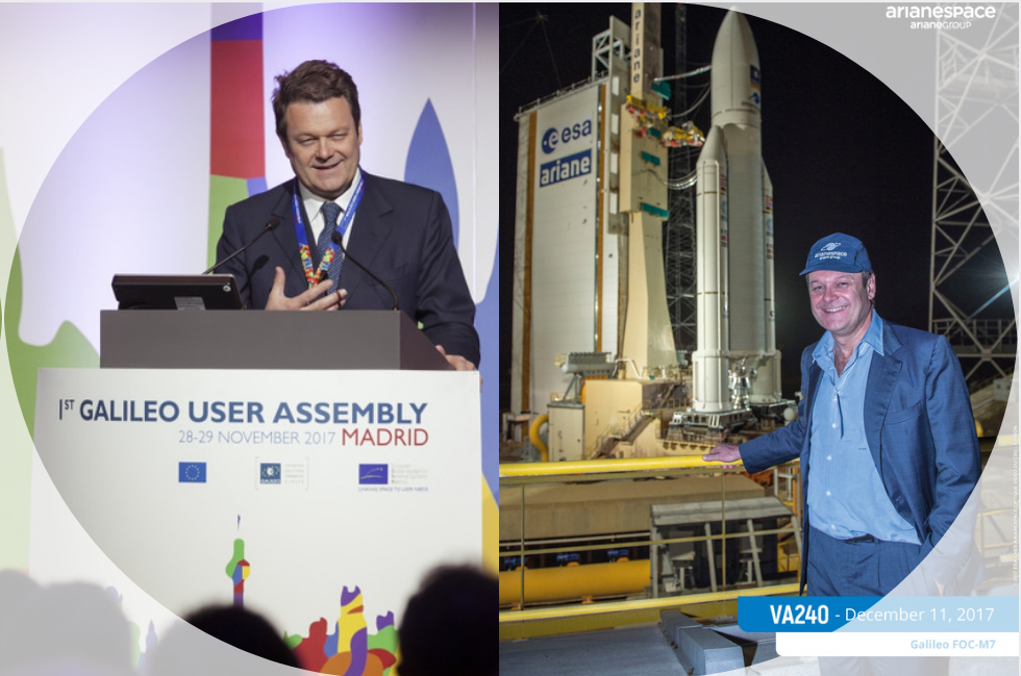A great year for Galileo, and the GSA
2017 was a year marked with milestones. Following the Declaration of Initial Services last December, on July 1 the GSA officially took responsibility for the Galileo operations and service provision. In June, we formally received the keys to the new Galileo Reference Centre (GRC) in The Netherlands, a facility that plays a pivotal role, with independent monitoring of and reporting on Galileo’s performance. Furthermore, as of July 1, the Galileo Security Monitoring Centre (GSMC) began delivering services 24/7, supporting the configuration of Initial Services.
In parallel, additional satellites are being added to the Galileo constellation. Just last week we saw the successful launch of four more satellites, bringing the constellation to a total of 22. This satellite launch was special for the GSA, as it was the first time the GSA played a role with responsibility for the Early Orbit Phase of the mission and overseeing Spaceopal GmbH in their new role as the Galileo Service Operator (GSOp). This role is essential to ensuring proper system performance and a related return on investment from Galileo in the form of value-added services and applications.
The GSA’s achievements have also been highlighted in a mid-term review performed by the EC, and endorsed by the Parliament and Council. This is an important recognition of the hard work and commitment of the entire European GNSS community.
Last but not least, the GSA ISO-9001 re-certification reconfirmed that the Agency is growing on a solid foundation of quality.

Carlo des Dorides, GSA Executive Director
Bringing value to the market
Throughout the year, the GSA made headway in maximising Galileo user adoption. In November, we welcomed nearly 280 users to the 1st Galileo User Assembly – with many more joining in remotely. Here we inaugurated another important milestone for the Galileo programme: the User Consultation Platform (UCP). Through this innovative platform, users from a wide range of market segments can share information on needs and market trends and define their Position, Navigation and Timing (PNT) user requirements.
We also continued our close work with chipset and receiver manufacturers, as they are essential to Galileo’s success. A highlight here was Broadcom’s launch of the BCM47755 – the world’s first mass-market, dual frequency GNSS receiver device for smartphones. Indeed our market development efforts are paying off. When Apple unveiled its much-anticipated iPhone 8, iPhone 8 Plus and iPhone X earlier this year, it announced that each was Galileo-enabled. The new iPhones join a growing list of top smartphone brands that support Galileo, including a range of phones from BQ, Huawei, Samsung, Meizu and Sony.
Moving EGNOS forward
Even though Galileo dominated much of the headlines this year, 2017 was also another banner year for EGNOS, which has been providing an excellent performance to users. The highlight was the signing of the EGNOS GEO 3 contract, which marks a major milestone in the programme’s development. We are also making real progress on EGNOS Version 3, and I am hopeful that the contract will be signed soon.
New year, new achievements
But enough about the past, it’s time to look ahead! With 2018 on the horizon, I see improved performance for both Galileo and EGNOS and ever-increasing market uptake. A particular focus will be on ensuring that we achieve the Enhanced Services milestone for Galileo in 2018. As we quickly move towards Full Operational Capability (FOC), I have no doubt that Galileo is poised to become the second GNSS constellation of choice – supporting billions of users worldwide.
As 2017 draws to a close, my heartfelt thanks go to the GSA staff for their hard work and commitment, and special thanks go to the European GNSS community for their trust and support throughout the year.
Happy Holidays to all of you.
Media note: This feature can be republished without charge provided the European GNSS Agency (GSA) is acknowledged as the source at the top or the bottom of the story. You must request permission before you use any of the photographs on the site. If you republish, we would be grateful if you could link back to the GSA website (http://www.gsa.europa.eu).